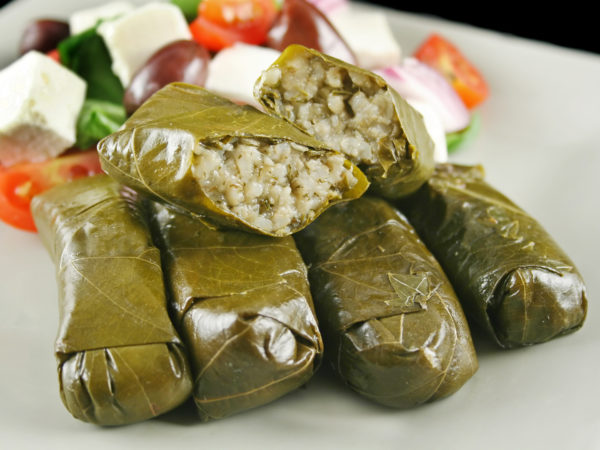Greece travel tips
Greece travel tips: Greece, cradle of Western civilization, boasts ancient ruins, stunning islands, Mediterranean cuisine, and a rich cultural legacy.
Regions 🌎
Greece travel tips. Here is a list of all the regions of the Greece.

Attica

Central Greece

Central Macedonia

Crete

East Macedonia and Thrace

Epirus

Ionian Islands

North Aegean

Peloponnese

South Aegean

Thessaly

West Greece

West Macedonia

Mount Athos
Before you go 🛩
Important information you should know before your trip
Info

Capital | Athens
Flag Codes:
ISO alpha-2 GR,
ISO alpha-3 GRC
Currency
Badge | Euro
CODE | EUR
NUMBER | 978
SYMBOL | €
FRACTION | Penny
Mobile Coverage
Dialing Code | +30
SIM Card
Coverage | 3G / 4G / 5G |
Mobile Networks | Cosmote Mobile | Nova Mobile | Vodafone Mobile |

Location
Greece is a country located in southeastern Europe. It is situated at the crossroads of Europe, Asia, and Africa and is bordered by Albania, North Macedonia, Bulgaria, and Turkey to the north, and the Ionian Sea and Mediterranean Sea to the west and south. To the east, Greece is bordered by the Aegean Sea.
The country has a diverse landscape that includes mountains, valleys, and islands. The southernmost region of Greece consists of a large number of islands in the Aegean Sea, the largest of which are Crete, Euboea, and Rhodes.
The capital city of Greece is Athens, which is one of the oldest cities in the world and an important cultural and historical center. Greece has a rich history and is often referred to as the cradle of Western civilization due to its significant contributions to art, philosophy, literature, democracy, and other aspects of human civilization.
Currency
The currency of Greece is the Euro (EUR).
Greece adopted the euro as its official currency on January 1, 2002.
Before that, the currency used was the Greek Drachma (GRD).
Languages
The official language of Greece is Modern Greek, which is an evolved form of Ancient Greek and is widely spoken throughout the country. Modern Greek is an Indo-European language that has its own alphabet and is spoken by approximately 99% of the population in Greece.
In addition to Greek, some communities in Greece also speak regional dialects, such as Tsakonian in the Peloponnese region and Griko in the Calabria region of Italy, which are variants of Greek with influences from other languages and cultures. There are also minorities who speak other languages, such as Turkish, Albanian and Romani.
Climate 🌡
Greece has a Mediterranean climate, which means it experiences hot, dry summers and mild, wet winters. The country’s geographical location and proximity to the Mediterranean Sea play a significant role in shaping its climate. However, Greece’s diverse topography, including mountains, plains, and coastal areas, can lead to some regional variations in climate.
Here are the key characteristics of Greece’s Mediterranean climate:
Summer (June to August): Summers in Greece are hot and dry, with temperatures often reaching 30°C (86°F) or higher, especially in the mainland and coastal areas. The islands tend to be slightly cooler due to sea breezes. This is the peak tourist season, and many people visit Greece to enjoy its beautiful beaches and warm weather.
Autumn (September to November): Autumn is a pleasant time to visit Greece as temperatures begin to cool down, and the weather becomes more comfortable for outdoor activities. It’s still relatively dry, but some rain can occur, especially in October and November.
Winter (December to February): Winters in Greece are mild, especially in the southern regions and the islands. Temperatures rarely drop below freezing in coastal areas, but the northern mountainous regions can experience colder temperatures and even snowfall. Rain is more frequent during the winter months.
Spring (March to May): Spring is another enjoyable time to visit Greece as the weather starts to warm up, and the landscape becomes lush and green after the winter rains. It’s a great time for sightseeing and exploring the countryside.
Greece travel tips
If you’re planning a trip to Greece, here are some travel tips to enhance your experience:
Ancient Marvels:
Immerse in Greece’s rich history at Acropolis, Delphi, and Olympia for a glimpse into ancient civilization.
Island Paradise:
Discover diverse islands like Santorini and Mykonos; each offers unique landscapes, beaches, and cultural experiences.
Archipelago Adventures:
Venture beyond the popular islands. Explore hidden gems like Milos, Naxos, or Folegandros for a quieter retreat.
UNESCO Sites:
Explore UNESCO World Heritage sites, including Meteora, a stunning complex of monasteries perched on towering rocks.
Transportation:
Use public transport, ferries, or rental cars for island-hopping. Be cautious while driving on winding roads. View Guide.
Cultural Etiquette:
Follow local customs, such as not pointing your feet at people and showing respect in religious sites.
Memorable Souvenirs:
Bring back olive oil, local wines, handmade crafts, and traditional Greek sweets as souvenirs of your unforgettable journey.
Enjoy your time in Greece!

The best of the best
Greek cuisine is known for its delicious and flavorful dishes that showcase the country’s rich culinary heritage. Traditional Greek foods often incorporate fresh, locally sourced ingredients, such as olive oil, herbs, vegetables, and a variety of cheeses.

Moussaka
A classic Greek dish made with layers of eggplant, potatoes, minced meat (often beef or lamb), and topped with a creamy béchamel sauce.

Souvlaki
Grilled skewers of marinated meat, usually pork, chicken, or lamb, served with pita bread, fresh vegetables, and a yogurt-based sauce called tzatziki.

Dolmades
Grape leaves stuffed with a mixture of rice, onions, herbs, and sometimes minced meat. They are typically served as appetizers or part of a mezze platter.
Here are some typical foods of Greece:
Greek Salad (Horiatiki): A refreshing salad made with tomatoes, cucumbers, onions, olives, feta cheese, and a drizzle of olive oil. It’s a staple in Greek cuisine and a must-try when visiting Greece.
Spanakopita: A savory pastry filled with spinach, feta cheese, onions, and herbs, wrapped in layers of thin phyllo dough.
Tzatziki: A popular yogurt-based sauce made with cucumbers, garlic, dill, and olive oil. It’s often served with grilled meats or as a dip with pita bread.
Pastitsio: A baked pasta dish similar to moussaka, but with pasta instead of eggplant and sometimes cinnamon-spiced meat sauce.
Fava: A puree made from yellow split peas, typically served as an appetizer with olive oil and lemon.
Gyros: Similar to souvlaki, but the meat is usually cooked on a vertical rotisserie. It’s served in a pita wrap with vegetables and sauces.
Baklava: A sweet and rich pastry made with layers of phyllo dough, nuts (often walnuts or pistachios), and sweet syrup or honey.
Greek Yoghurt: A thick and creamy yogurt that’s often served with honey, nuts, or fresh fruits as a dessert or breakfast option.
Kleftiko: Slow-cooked lamb or goat, traditionally cooked in a sealed clay oven with herbs, vegetables, and olive oil.
Greek cuisine offers a wide variety of flavors and dishes, and each region may have its own specialties and local ingredients.
Transportation 🚥
More information about this country
Choose your destination 📍🗺
Useful Links ✅



